Let’s play a word association game. What comes to mind when you hear the term, “gluten free diet plan”? Perhaps, “celiac disease”? Try, “dairy free.” Did you think of “lactose intolerant”? Now, what about “nut free”? Maybe you thought of “allergen.”
All of these associations are completely appropriate, but industry companies in the foods for sensitive diets market believe there is a lot more to their products than meets the eye. In fact, the taste and health properties of these foods are so different from what the category offered even just five years ago, that it’s time for a primer on what makes these foods great options for so many shoppers—even those unaffected by food allergens and intolerances.
Moooving Beyond Dairy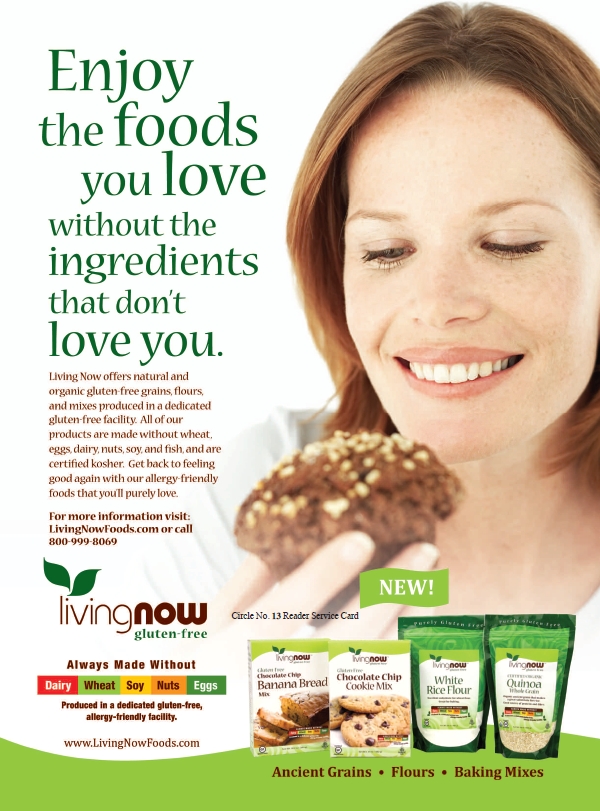
Sure, you’re probably ringing up a fair amount of dairy-free foods for your lactose-intolerant clientele. But don’t miss out on what this category offers to shoppers who aren’t lactose intolerant.
For starters, there is a growing number of people that are allergic to—not intolerant of—dairy. Says Jamie Schapiro, director of marketing at GO Veggie! (Galaxy Nutritional Foods), North Kingstown, RI, “There’s such a big increase in food allergies as a whole. Of the top eight allergies, milk is number three.” Thus, affected individuals can’t have dairy at all, and need dairy-free alternatives.
In addition, Katherine Franklin, director of marketing for Follow Your Heart, Canoga Park, CA, explains that vegans often scout out dairy-free alternatives. But she raises another interesting point that has nothing to do with the vegan lifestyle, allergies or intolerances: “We see a lot of people searching for dairy-free products who have high cholesterol and are concerned with heart health, as well as those who are following a gluten-free, casein-free diet.”
Indeed, many milk-derived products are known to contain cholesterol and saturated fat—often no-no’s for those who are watching their diet in support of heart health.
This isn’t a small group by any means; David Mintz, chairman and founder of Tofutti, Cranford, NJ, believes that while 69 million Americans seek out dairy alternatives because they are lactose intolerant, some 22 million do so for health reasons. “People who are lactose intolerant are one of the largest percentages of individuals consuming our dairy-free products, followed by vegans who are looking to enjoy products that do not contain animal products,” states Mintz. “The third group of people we see consuming our dairy-free products are people looking to buy a healthy product that is low in cholesterol.”
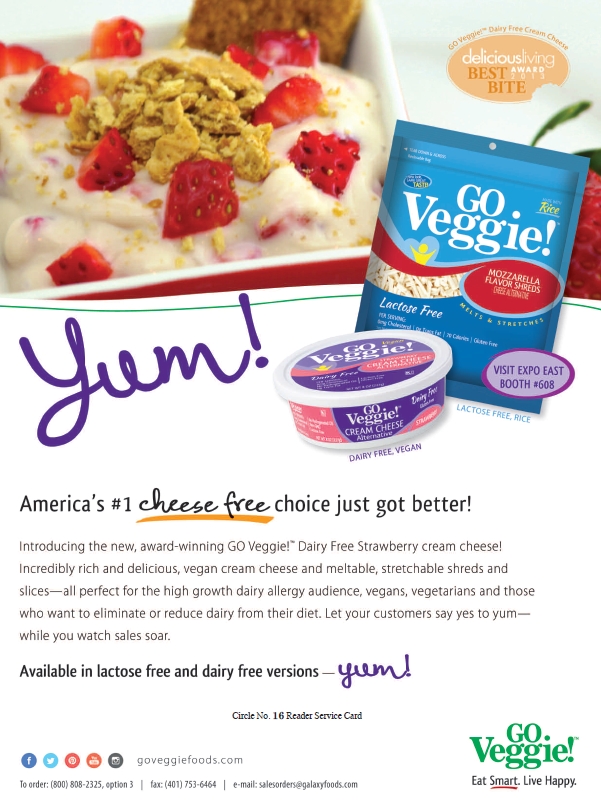 The health benefits of going dairy free don’t stop with the heart. Schapiro says research links heavy dairy consumption to constipation, sinus congestion, asthma, arthritis and more. Thus, he believes some people go dairy free to cleanse their bodies.
The health benefits of going dairy free don’t stop with the heart. Schapiro says research links heavy dairy consumption to constipation, sinus congestion, asthma, arthritis and more. Thus, he believes some people go dairy free to cleanse their bodies.
Another surprise in this category has to do with the vocabulary involved, namely that dairy products can still be lactose free, according to Schapiro. This distinction is a relatively new innovation in the category. “Not until recently has there been such a prevalence of dairy-free products,” Schapiro observes. “If a product is dairy-free, it means there’s no milk at all, which means there’s no lactose. So, for someone who is lactose intolerant, dairy-free products appeal to them more now because they taste a lot better.”
Adds Schapiro, “Lactose interolerants have so many options…I think a lot of it is because the dairy-free milk and vegan cheese market has grown so much.”
To reiterate Schapiro’s point, dairy-free products must be delicious, or else you’ll lose out on shoppers who have other choices. This is increasingly important for taste- and consistency-oriented shoppers, which can be a problem when melting a dairy-free or lactose-free cheese.
Gooey and good. A common limitation of dairy- or lactose-free cheeses is making them melt like a dairy cheese, without sacrificing taste and consistency. This is no small feat.
“While cheese containing dairy melts naturally, we are making a 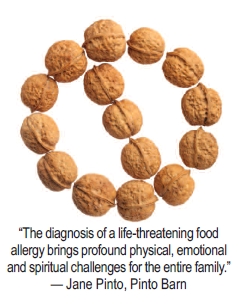 product that Mother Nature did not create,” says Mintz.
product that Mother Nature did not create,” says Mintz.
For instance, Franklin points out that dairy-based cheeses have ingredients in them like casein, “which are very functional in both the cold texture and the melt.” This can be difficult to replicate.
Schapiro says his company’s lactose-free line (GO Veggie!) has casein in it and it appeals to those looking for health benefits. This milk protein helps cheese function like a regular cheese by letting it melt and stretch. “So when you have a product with casein in it, it really simulates the feel and taste of regular cheese.”
Capturing those characteristics in a vegan and/or casein-free cheese is a challenge. Schapiro cites his company’s separate line of vegan and casein-free cheese as an example: “We have to take the right blend of gums, proteins, solids and fats to put together a formula that gives the right mouthfeel and cheese-like texture. It’s very, very difficult to do.”
Gums replace the casein, functioning as an emulsifier and stabilizer to hold everything together, he states. Plus, Schapiro adds that companies like his add in other components to ensure that people are getting similar nutrition to what they’d get from dairy cheese.
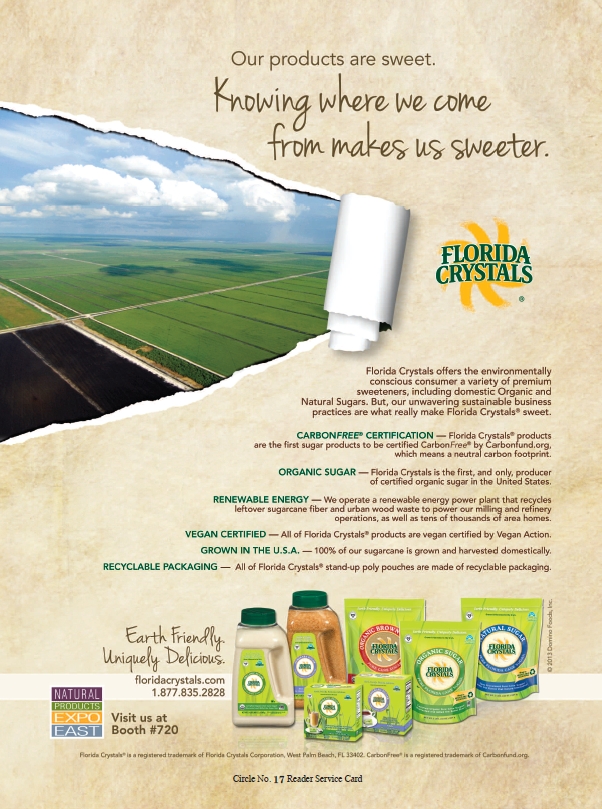 Franklin explains that the science of making vegan cheese can be difficult and time consuming. “After years of research and development, we feel we have created a creamy and authentic cheese flavor with our new Vegan Gourmet Shreds,” she states. “Vegan Gourmet Shreds feature a breakthrough formula that delivers the meltability and texture of dairy-based cheese.”
Franklin explains that the science of making vegan cheese can be difficult and time consuming. “After years of research and development, we feel we have created a creamy and authentic cheese flavor with our new Vegan Gourmet Shreds,” she states. “Vegan Gourmet Shreds feature a breakthrough formula that delivers the meltability and texture of dairy-based cheese.”
Schapiro adds that vegan cheese makers are getting so good at what they do that an interesting new category is opening up: artisan vegan cheeses. This could include soy-free brie, cheeses made with nuts and the like. “I think there’s an opportunity for spreads, coffee products and other types of products,” he says.
Taking it to the next level. Beyond cheese, milk alternatives are a growing market. Schapiro cites some stats from Packaged Facts, indicating that dairy milk sales are declining while dairy alternatives are growing: Dairy-free milk sales in the United States have increased for five straight years to $1.33 billion in 2011. “That’s led in order by soy milk being first, then almond milk, rice milk and coconut milk,” Schapiro points out. Dairy milk, on the other hand, dropped by 2.3% in 2011, and it continues to drop.
Schapiro believes coconut and almond milks will drive the category; coconut milk for certain health aspects and almond milk for the taste. He states, “Almond milk has been a game changer from a taste standpoint.” Even though almond milk doesn’t have as much protein as soy milk, it’s still popular with many shoppers who feel it has a cleaner taste than soy, and doesn’t have the “bite” of soy milk. The same is true of hemp, so Schapiro believes we’ll soon see an uptick of hemp-based products.
In the dairy-free dessert segment, Mintz believes 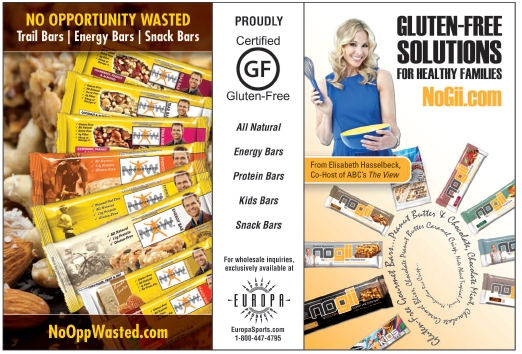 that stevia is a trending ingredient. “All-natural zero-calorie stevia offers a number of potential benefits to consumers,” says Mintz. “Like artificial sweeteners, stevia sweeteners are suitable options for people with diabetes, but without the chemicals and artificial sweetener.”
that stevia is a trending ingredient. “All-natural zero-calorie stevia offers a number of potential benefits to consumers,” says Mintz. “Like artificial sweeteners, stevia sweeteners are suitable options for people with diabetes, but without the chemicals and artificial sweetener.”
Stevia helps create a delicious taste, and Mintz believes this is where food companies’ priorities should be. “While we have spent tireless efforts ensuring that our products taste as close to or better than dairy, others have not,” he states. “Many of our competitors are unfortunately creating products that do not taste good and this is hurting the dairy-free category.”
Not So Nutty
Allergic reactions to peanuts and tree nuts can cause fatal cases of anaphylaxis in some, so there’s an important need for safe, nut-free products for those with the allergy and their community.
“The families, friends, classmates, teachers and others in the extended world around those with nut allergies buy nut-free foods so they have safe food to offer someone they care about and to help that person feel and be safe,” states Jane Pinto, CEO and co-founder of Pinto Barn (maker of Don’t Go Nuts), Salida, CO.
 This not only includes in the home, but also in workplaces and classrooms. In fact, the Ontario government enacted Sabrina’s Law in 2005, which requires every school board to have an anaphylaxis policy to protect children with life-threatening allergies. Nuts are banned in most schools and school-related activities as a result. “So, all families sending children to school, soccer practice or Cub Scouts, for example, must purchase nut-free products for all the children to enjoy,” states Tricia Ryan, marketing director for the Canadian Celiac Association Gluten-Free Certification Program/Allergen Control Group, Milton, ON, Canada.
This not only includes in the home, but also in workplaces and classrooms. In fact, the Ontario government enacted Sabrina’s Law in 2005, which requires every school board to have an anaphylaxis policy to protect children with life-threatening allergies. Nuts are banned in most schools and school-related activities as a result. “So, all families sending children to school, soccer practice or Cub Scouts, for example, must purchase nut-free products for all the children to enjoy,” states Tricia Ryan, marketing director for the Canadian Celiac Association Gluten-Free Certification Program/Allergen Control Group, Milton, ON, Canada.
Here in the States, the trend holds. According to Jill Robbins, president of HomeFree, LLC, Windham, NH, “Some schools only permit nut-/peanut-free treats, leaving parents scrambling for solutions. Other schools allow nut products, but many parents still seek nut-free options for physical safety and social inclusion of those with allergies.”
The spread of nut-free means taste is paramount, since so many families eat nuts at home, but send alternatives to school and gatherings. If done well, some people prefer the taste of nut-free foods. Says Pinto of her company’s nut-free soy butters, “Other people buying nut-free products are people who just love the taste and quality of our products…they’re really good!”
Robbins believes taste is a big part of making a child with food allergies feel included. “The activity of enjoying baked treats together is a part of most social occasions,” she states. “Children with food allergies and other special diets want to participate, parents care that their children feel included, and most people serving food would like to include everyone.”
|
Surge in Food Allergies
There are several theories about why there’s an increase in food allergies these days. Here are a few, offered by Tricia Ryan, marketing director for the Canadian Celiac Association Gluten-Free Certification Program/Allergen Control Group, Milton, ON, Canada. 1. Delayed introduction of foods. The recent practice of delaying the introduction of some foods with high potential for allergy such as peanut may be associated with higher rates of food allergy. Evidence for this theory comes from the fact that cultures that introduce peanut earlier have less food allergy while those that delay introduction of potentially allergenic foods have seen an increase in food allergy. 2. Form of food we eat. Different forms of the same food appear to be more likely to provoke an allergic response, specifically roasting peanuts rather than boiling them makes them much more likely to cause an allergic reaction. Also, many people with milk or egg allergy can tolerate baked forms of these foods. 3. Increased awareness and reporting. Heightened awareness among doctors, parents, teachers and the general public about the symptoms and potential consequences of food allergies may contribute to the increasing number of people with food allergies. Additionally, clinical research in food allergy is advancing rapidly, and earlier studies may have underestimated the rates of food allergy. 4. Hygiene overkill. The hygiene hypothesis states that excessive cleanliness interrupts the normal development of the immune system, and this change leads to an increase in allergies. In short, our “developed” lifestyles have eliminated the natural variation in the types and quantity of germs our immune system needs for it to develop into a less allergic, better regulated state. |
|
For some companies, non-GMO soy is the go-to ingredient for nut alternatives. Pinto points out, “Soy has been a staple of nut-free families for years and serves as the base ingredient for our nut-free spreads.” Nonetheless, several food companies, like hers, are looking to revise their formulas to also be soy-free due to the rise of soy allergies. Pinto calls this the “next generation of nut-free food products.”
What else could we see in the future? Pinto’s company is exploring several superfood ingredients for future snacks. “Our goal is to develop another line of nutritional snacks that have higher proteins, less sugar and even healthier ingredients for our nut-free customers, while preserving our core mission to use the highest quality, tastiest nut-free ingredients possible,” she states.
Another possible improvement to the category could be even more companies using dedicated nut-free facilities to manufacture their foods. “If you read labels, you’ll see that so many products—products you’d never expect—are made in facilities that also process nuts,” says Pinto. This is bad news for those with nut allergies, since the allergen could spread during production and cause harm.
States Robbins, “Research has shown 6.5% clinically significant cross-contamination in products made in shared facilities with peanuts.”
Pinto taps into what it’s like to be a parent of a child with a life-threatening food allergy. “The paradox of our need to nourish our bodies with food and yet be hyper-vigilant about what food we put in our bodies creates an underlying state of anxiety for children and caregivers,” she says. “No matter how hard we try, we cannot completely control our daughter’s safety.”
But offering products made in a nut-free facility can help put a parent’s mind at ease.
Growing Gluten Free
According to the Gluten-Free Certification Organization (GFCO), about one in 133 people in the United States has celiac disease, though only 5% are diagnosed with the disease. Estimates also indicate 6% of all Americans have a gluten sensitivity. That’s about 18 million people!
We know that this group of shoppers is driving sales. According to SPINS data (52 weeks ending 12/24/11), sales of gluten-free certified products (such as by groups like GFCO) are on the rise. Overall sales of gluten-free products were estimated to be $6.12 billion in 2011 (52 weeks ending 12/24/11), and could reach $8 billion or more this year (1).
Top categories for growth include bread and baked goods (which grew from $20 million in sales to $51 million from 2010 to 2011), chips/snacks ($61 million to $94 million), cookies/snack bars ($10 million to $13 million) and crackers/crispbreads ($20 million to $51 million) (1).
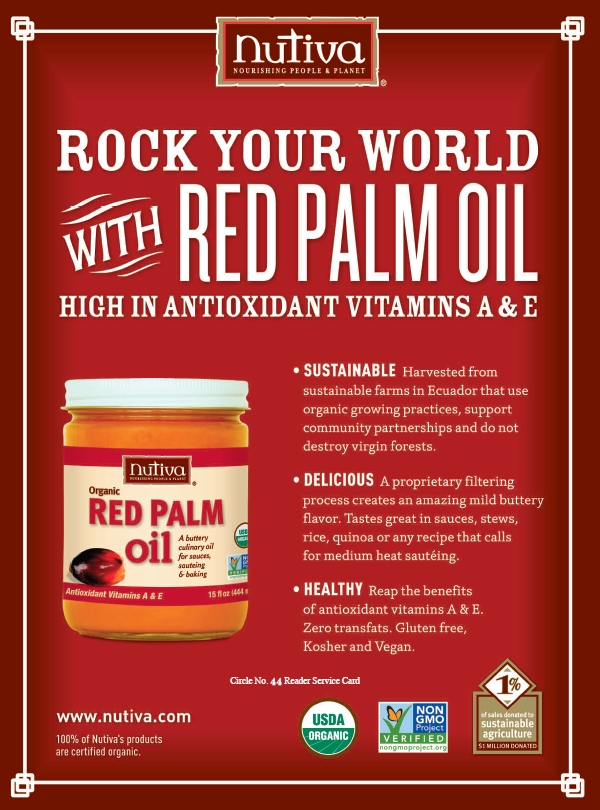 But clearly, all this revenue isn’t just coming from those with celiac disease or major gluten sensitivities. According to Pamela Giusto-Sorrells, president and founder of Pamela’s Products, Ukiah, CA, “The rise in minor gluten intolerances and those looking for ‘cleaner’ diets” are driving gluten-free sales, as is the “growing consumer acknowledgement of how great they feel when eating gluten-free.”
But clearly, all this revenue isn’t just coming from those with celiac disease or major gluten sensitivities. According to Pamela Giusto-Sorrells, president and founder of Pamela’s Products, Ukiah, CA, “The rise in minor gluten intolerances and those looking for ‘cleaner’ diets” are driving gluten-free sales, as is the “growing consumer acknowledgement of how great they feel when eating gluten-free.”
States Ryan, “According to a SupermarketGuru.com survey, 71% of consumers have purchased a gluten-free food product with 54% expressing the commitment to continue to purchase these food items. Once again, the main reasons for doing so are associated with the perception that gluten-free foods are better for you.”
Whether it’s for weight-loss or autism support, Giusto-Sorrells says there’s a wider awareness that gluten-free living can be helpful. She says this change is driving product development at her company, which is significant. As discussed for the dairy-/lactose- and nut-free categories, gluten-free shoppers aren’t necessarily on a special diet by doctor’s order; it’s often a personal choice. Therefore, gluten-free foods must taste as good or better than the foods they are used to. States Giusto-Sorrells, “The most appealing products are everyday items—cookies, cakes, bars and breads—and no one wants to compromise on flavor. Great taste is crucial.”
Future growth. Though gluten free is clearly a growing and successful category, there are still some unmet needs in this segment. The first involves the perception that gluten-free products aren’t as nutritious as their “regular diet” counterparts.
States Ryan, “Research shows that many gluten-free flour 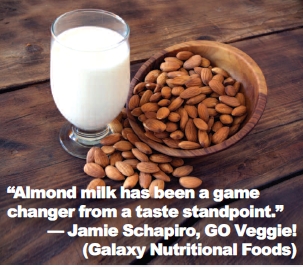 replacements are not enriched nor are they required to be enriched the way that white and whole-wheat flours are mandated to be. Many gluten-free products are lower in B vitamins as well as fiber.”
replacements are not enriched nor are they required to be enriched the way that white and whole-wheat flours are mandated to be. Many gluten-free products are lower in B vitamins as well as fiber.”
She says some companies are using enrichment to create a competitive edge. So, in the end, whether or not a gluten-free food is nutritious depends on the particular product.
For instance, Doug Radi, senior vice president of marketing and conventional sales at Rudi’s Organic Bakery, Boulder, CO, believes, “Gluten-free products can be just as nutritious, just in a different way.”
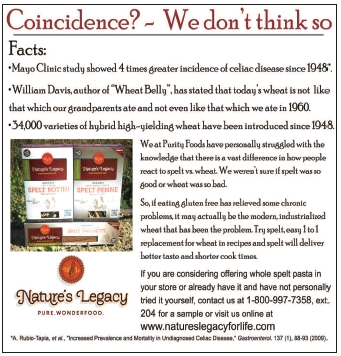 He explains that certain ingredients that must be avoided for allergies and intolerances also offer some nutritional value. “However, we do our best to keep as much nutrition in our gluten-free products as we do in our organic products,” states Radi. For instance, his company’s products include healthy and nutritional ingredients like sunflower seeds, millet, fiber and flax. He adds another example: “Our gluten-free tortillas are made with a whole-grain flour blend and contain five grams of fiber per serving.”
He explains that certain ingredients that must be avoided for allergies and intolerances also offer some nutritional value. “However, we do our best to keep as much nutrition in our gluten-free products as we do in our organic products,” states Radi. For instance, his company’s products include healthy and nutritional ingredients like sunflower seeds, millet, fiber and flax. He adds another example: “Our gluten-free tortillas are made with a whole-grain flour blend and contain five grams of fiber per serving.”
Giusto-Sorrells speaks of her company’s new Pizza Crust Mix and Biscuit & Scone Mix, which offer 13 grams of whole grains per serving, and the Whenever Bars have chia seeds for a fiber boost. She explains that her company incorporates nutritional aspects when it can, and at the same time, “The drive to make all of our products as delicious as people expect is what motivates me to spend months personally developing and testing every recipe.”
But not all gluten-free products are healthy, 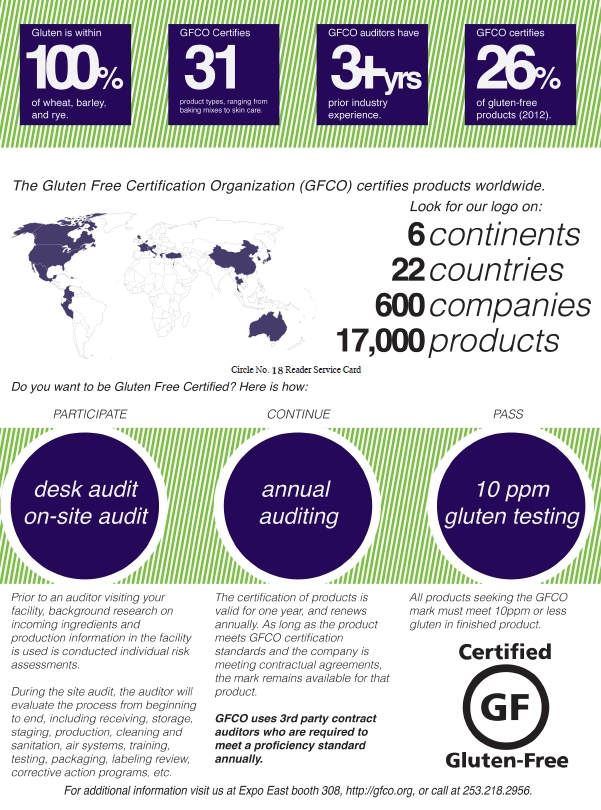 namely the ones that some mainstream companies are putting out on supermarket shelves. “[Gluten-free products] have a heritage of health food store freshness, no preservatives, non-GMO and organic,” states Ryan, “however, with the growth and abundance of products now on the market with self-certification and mass grocery distribution, this can be a false perception.”
namely the ones that some mainstream companies are putting out on supermarket shelves. “[Gluten-free products] have a heritage of health food store freshness, no preservatives, non-GMO and organic,” states Ryan, “however, with the growth and abundance of products now on the market with self-certification and mass grocery distribution, this can be a false perception.”
Retailers can emphasize this difference to shoppers wondering whether a mainstream gluten-free product is just as good as an organic or natural brand.
In the end, perhaps the future of gluten free is an even wider-spread convergence of taste and health benefits. Indeed, Radi sees future potential in the market for delicious and nutritious products on a gluten free food list. He states, “There’s always an opportunity to continue to improve on both fronts, offering even better tasting products while improving the nutritional content using simple, wholesome and nutritious ingredients.” WF
Reference
1. SPINS, “Gluten-Free: Trend Highlights,” www.expowest.com/ew12/CUSTOM/Uploads/Gluten-free_Kerry_Watson.pdf, accessed June 18, 2013.
|
Select Offerings: Foods for Sensitive Diets Category Follow Your Heart: Vegenaise (Original, Reduced Fat, Grapeseed Oil, Organic, Soy-Free), Vegenaise Gourmet (Pesto, Chipotle, Roasted Garlic, Barbeque), Vegenaise Sauces (Horseradish Sauce, Tartar Sauce), Vegan Gourmet (Shreds: Mozzarella, Cheddar, Fiesta Blend), Vegan Gourmet (Mozzarella, Cheddar, Monterey Jack, Nacho), Vegan Gourmet (Dairy Alternatives: Cream Cheese, Sour Cream), Salad Dressings (Vegan Ranch, Vegan Bleu Cheese, Vegan Honey Mustard, Vegan Thousand Island, Vegan Creamy Garlic, Vegan Organic Caesar). GO Veggie!: Lactose-Free GO Veggie! Line (cheese slices, blocks, shreds, grated topping); Lactose-Free Rice GO Veggie! Line (cheese slices, blocks, shreds); Dairy-Free GO Veggie! Line (cheese slices, shreds, cream cheese alternative, grated topping). Green Valley Organics: Lactose Free Yogurt (Plain, Blueberry, Strawberry, Honey, Peach and Vanilla), Kefir (Plain, Blueberry Pomegranate Acai and Strawberry Pomegranate Acai) and Sour Cream. HomeFree, LLC: Gluten-free, allergy-friendly cookies are available in Chocolate Chip, Double Chocolate Chip, Vanilla and Oatmeal (5-oz grocery boxes, 10-pack retail display boxes, and bulk pack single serve bags). Pamela’s Products: Gluten-free foods, such as the newest cup-for-cup Artisan Flour Blend and Biscuit & Scone Mix, as well as our iconic Baking & Pancake Mix, Chocolate Cake Mix, on-the-go Whenever Bars, and Oatmeal Cookie, Sugar Cookie, and Pizza Crust Mixes. Pinto Barn (maker of Don’t Go Nuts): Five flavors of gluten-free and vegan soy butter (Chocolate, Cinnamon Sugar, Slightly Sweet, Lightly Sea Salted and Pure Unsalted), six flavors of nutritional energy bars (Blueberry Blast, Boogie Board Bash, Celestial Campout, Gorilla Power, Lift Service, Whitewater Chomp) Rudi’s Organic Bakery: Rudi’s Gluten-Free Bakery, a line of gluten-free breads, tortillas, wraps and pizza crust. Tofutti: Dairy-free foods including Pizza Pizzaz, Tofutti Cuties, Marry Me Bars, Chocolate Fudge Treats, Mintz’s Blintzes, Cheese Slices, Ricotta Cheese, Sour Cream, Ravioli and more. |
Published in WholeFoods Magazine, September 2013











